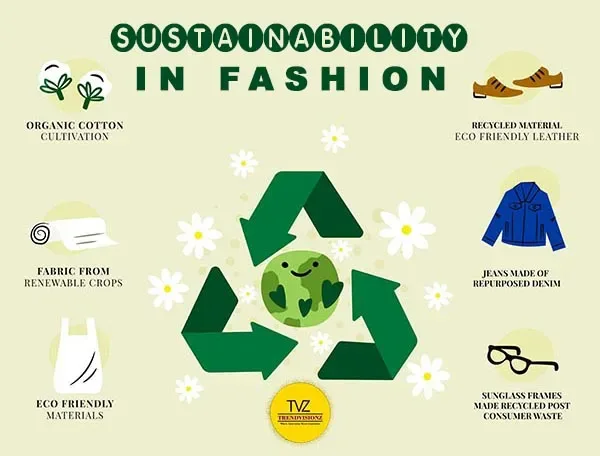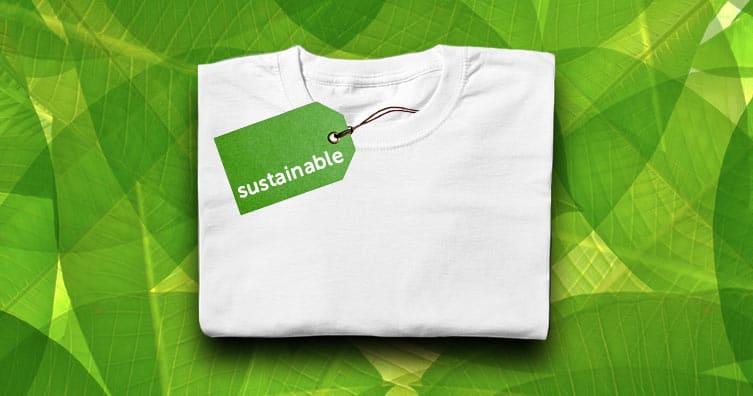Cape Town Sustainable Fashion: Redefining Style with Honest Options
Cape Town Sustainable Fashion: Redefining Style with Honest Options
Blog Article
Stay Ahead of the Curve by Checking Out Ingenious Style Patterns
In an industry as vibrant as style, remaining in advance includes more than simply adhering to current trends-- it demands an exploration of advancement. Smart fabrics, for instance, are changing garments into practical work of arts, while 3D printing is transforming layout procedures with its customizable, waste-reducing capacities. As sustainability becomes a keystone, technologies like eco-friendly materials and round style techniques are reshaping ecological obligation - Cape Town Sustainable Fashion. Furthermore, the convergence of modern technology and fashion heralds a brand-new period of customer involvement. How, then, can these arising patterns redefine the future of style, and what implications do they hold for brands seeking to prosper in this evolving landscape?

Embracing Smart Textiles
In recent times, the fashion business has actually experienced a transformative shift with the assimilation of smart fabrics, a sophisticated innovation that mixes modern technology with textile. This evolution stands for not just a blend of visual appeals and capability however likewise a substantial leap towards sustainability and customization in vogue. Smart fabrics, additionally understood as e-textiles, installed innovative electronics such as sensors and conductive strings within the fabric, making it possible for garments to interact with the environment or the user.
These textiles are made to monitor physical specifications, such as heart price or body temperature, offering real-time health analytics. Beyond health applications, wise textiles are likewise being utilized for flexible clothes, which can transform color or pattern in action to ecological stimuli, hence offering a vibrant fashion experience.
In addition, the growth of energy-harvesting fabrics that produce power from motion or sunlight is leading the way for self-sufficient wearable innovation. This technology is attracting ecologically mindful consumers and designers intending to reduce the ecological footprint of style. As research and growth in this area breakthrough, smart textiles are expected to end up being significantly common, reshaping the landscape of modern-day fashion with their multifunctional capacities.
The Rise of 3D Printing
Transforming the manufacturing landscape, 3D printing has become a game-changer in the style industry. This innovative technology has enabled designers to press the limits of creativity, producing elaborate and tailored garments that were formerly unimaginable. By leveraging electronic layout and additive production, 3D printing facilitates the creation of complex geometries and patterns, enabling designers to explore brand-new textures and frameworks.
A noteworthy advantage of 3D printing in style is its capability to produce on-demand, decreasing waste and minimizing stock demands. This effectiveness not only optimizes manufacturing procedures but likewise enables rapid prototyping, allowing designers to bring their visions to life in a much shorter duration. In addition, 3D printing supports customization to a level unrivaled by traditional approaches, using customized fits and distinct designs tailored to individual consumer preferences.
The rise of 3D printing has likewise equalized fashion, making it easily accessible to emerging designers that can currently produce top notch pieces without considerable monetary investment in standard production infrastructure. As technology continues to advance, the fashion market is poised to harness the full possibility of 3D printing, exploring brand-new products and strategies that will unquestionably redefine just how fashion is developed and created.
Lasting Fashion Developments
As the fashion business comes to grips with the pushing demand for ecological responsibility, lasting style innovations have actually emerged at the center of transformative modification. The growing awareness of ecological impact has sustained a shift in the direction of more eco-conscious practices and products. Developers and brands are now prioritizing sustainability, incorporating techniques that minimize waste and lower carbon impacts.
One considerable advancement is the rise of circular style, which highlights recycling and upcycling to extend the lifecycle of garments. This approach not only lowers waste yet likewise urges consumers to embrace a much more conscious method to apparel usage. Additionally, making use of sustainable materials, such as natural cotton, hemp, and recycled polyester, has gotten grip. These materials require less water and energy during manufacturing, significantly reducing environmental influence.
An additional find more innovation depends on the fostering of cutting-edge dyeing strategies that utilize natural dyes or waterless processes, thus minimizing the vast quantities of water and chemicals traditionally made use of in textile dyeing. Moreover, advancements in biotechnology have resulted in the creation of lab-grown natural leather and textiles, using cruelty-free and environmentally friendly choices to traditional materials. With these pioneering initiatives, the fashion industry is making significant strides towards an extra sustainable future.

Tech-Integrated Clothing
Tech-integrated clothing represents a cutting-edge fusion of fashion and innovation, improving exactly how people connect with their clothes. This cutting-edge domain is noted by the incorporation of wise fabrics and ingrained electronic elements, boosting both functionality and aesthetic charm. From health and fitness trackers installed in sports apparel to heated coats managed through smartphone applications, tech-integrated apparel offers consumers unprecedented benefit and flexibility.
Introducing brands are driving this pattern, focusing on developing garments that react to environmental stimulations or user commands. For example, some garments can transform color or pattern in response to temperature changes, while others incorporate biometric sensing units to keep track of health and wellness metrics like heart price or tension degrees. The smooth combination of innovation right into fabrics also reaches ecological sustainability, with efforts to establish self-cleaning textiles or garments that readjust to weather conditions, therefore decreasing the requirement for numerous layers.
In addition, the development of wearable technology is not simply restricted to apparel however encompasses devices like watches and eyewear, further expanding the scope of tech-integrated style. As the sector remains to innovate, the capacity for modification and customization in garments grows, using customers one-of-a-kind, tech-enhanced style experiences that accommodate their specific needs and preferences.
Future of Virtual Style
Recently, the future of online style has actually arised as a transformative pressure within the market, leveraging Click Here advancements in electronic technology to redefine exactly how fashion is created, experienced, and consumed. By integrating increased truth (AR), online reality (VIRTUAL REALITY), and 3D layout devices, developers can now craft immersive and interactive experiences that go beyond conventional style boundaries. Digital style permits the production of garments that exist only in digital settings, offering endless possibilities for advancement without the limitations of physical manufacturing.
This digital shift not only offers possibilities for imaginative expression however also addresses sustainability issues find more information intrinsic in typical style methods. Cape Town Sustainable Fashion. By removing the need for physical resources, online fashion lowers waste and lessens carbon impacts. Moreover, the increase of online fashion aligns with the enhancing customer demand for distinct and customized experiences, as digital garments can be personalized and tailored to individual choices effortlessly

Final Thought
The garment industry's future depend on the integration of lasting techniques and cutting-edge modern technologies - Cape Town Sustainable Fashion. Smart fabrics and tech-integrated apparel are improving capability, while 3D printing offers possibilities for customization and waste decrease. Sustainable fashion, through environmentally friendly products and circular methods, demonstrates a commitment to environmental stewardship. In addition, virtual fashion is positioned to redefine customer interactions. Adapting to these trends is essential for brands looking for to stay competitive and appropriate in this quickly evolving landscape.
In current years, the fashion sector has witnessed a transformative change with the combination of smart fabrics, a cutting-edge advancement that mixes technology with material.As the style market grapples with the pressing requirement for environmental obligation, sustainable style technologies have arised at the forefront of transformative adjustment.In current years, the future of virtual style has emerged as a transformative force within the market, leveraging innovations in electronic technology to redefine how fashion is created, experienced, and eaten. The increase of online style lines up with the raising consumer demand for special and customized experiences, as virtual garments can be tailored and customized to individual preferences with simplicity.
The style sector's future lies in the assimilation of lasting techniques and ingenious innovations.
Report this page